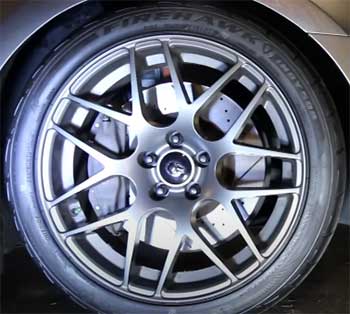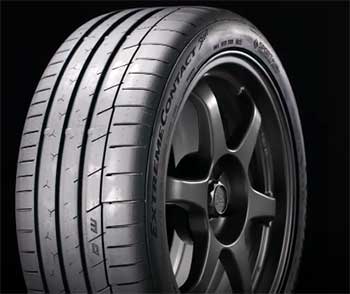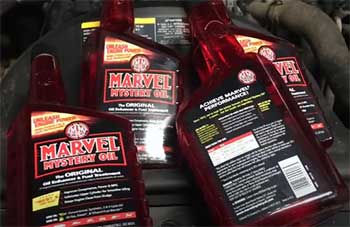As an automobile enthusiast, you know that your tires are not just round, black, and boring; they are the vital link between your car’s performance and the road.
This article focuses on two stellar performers in the world of ultra-high-performance tires: The Firestone Firehawk Indy 500 and the Continental ExtremeContact Sport.
Let’s dive in to see how they stack up against each other.
A Brief Comparison Table
| Feature | Firestone Firehawk Indy 500 | Continental ExtremeContact Sport |
| Wet Performance | Exceptional | Very Good |
| Dry Performance | Very Good | Exceptional |
| Noise Levels | Moderate | Low |
| Longevity and Durability | Good | Excellent |
| Pricing | Affordable | Higher-end |
The Power of Firestone Firehawk Indy 500

The Firehawk Indy 500 tires are Firestone’s flagship product, providing exceptional performance for sport and passenger cars.
It’s no surprise that Firestone, with its long and storied history in the Indy 500, has developed a tire that echoes the high-speed demands of this iconic race.
Pros of Firestone Firehawk Indy 500
- Exceptional Wet Performance: One of the Firehawk Indy 500’s standout features is its superior wet traction. Thanks to Firestone’s proprietary Pulse Groove technology, the tire channels water away from the tire’s surface, reducing the risk of hydroplaning.
- Solid Dry Grip: Firestone’s use of a high-silica content tread compound ensures that the Firehawk Indy 500 sticks to the road like glue, even under intense driving conditions.
- Aggressive Pricing: Despite offering top-notch performance, Firestone Firehawk Indy 500 tires are comparatively cheaper, offering superb value for money.
Cons of Firestone Firehawk Indy 500
- Road Noise: Some users have reported slightly more road noise than anticipated, which could be a downside for drivers seeking a quiet ride.
- Limited Tread Life: Although not universally experienced, some drivers have mentioned that the Firehawk Indy 500’s tread life is shorter than expected.
Also Read: Differences Between Firehawk Indy 500 And Nitto 555 G2 Tires.
Unleashing the Continental ExtremeContact Sport
The ExtremeContact Sport is Continental’s answer to drivers seeking race-proven performance from a street-legal tire. It’s engineered to deliver precise control, excellent traction, and responsive handling, making it a favorite among performance-oriented drivers.
Pros of Continental ExtremeContact Sport
- Dry and Wet Performance: The ExtremeContact Sport performs admirably on both dry and wet surfaces. It features Continental’s SportPlus Technology, which enhances grip on wet roads while ensuring superb cornering stability.
- Longevity: With a high treadwear rating, the ExtremeContact Sport is built to last, which is an advantage for drivers seeking longevity from their high-performance tires.
- Comfortable Ride: Despite its sporting credentials, this tire offers a comfortable ride, striking a good balance between performance and comfort.
Cons of Continental ExtremeContact Sport
- Price: These tires are somewhat more expensive than their competitors, including the Firestone Firehawk Indy 500.
- Performance in Cold Conditions: While the ExtremeContact Sport excels in warm, dry and wet conditions, it’s less stellar in cold weather. Its performance can diminish significantly in near-freezing conditions.
Key Differences Between Firestone Firehawk Indy 500 and Continental ExtremeContact Sport Tires
As we look closer into these high-performance tire models, it’s essential to understand their key differences. They both offer unique characteristics that cater to different user needs, preferences, and driving conditions.
- Wet Performance

The Firestone Firehawk Indy 500 stands out in terms of wet performance.
Its unique tread design, coupled with Pulse Groove technology, channels water away efficiently, reducing the risk of hydroplaning.
This makes the Firehawk Indy 500 a compelling choice for regions experiencing regular rainfall.
On the other hand, the Continental ExtremeContact Sport, while delivering dependable wet performance, doesn’t perform as well as the Firehawk in heavy rain.
However, its SportPlus Technology ensures a solid grip on wet roads and improved cornering stability.
- Dry Performance
Dry performance is one area where the Continental ExtremeContact Sport excels. It’s designed to offer maximum road contact, resulting in excellent dry handling and stability even at high speeds.
The high-grip compound ensures that the tire remains adhered to the road in high-temperature environments.
In contrast, the Firehawk Indy 500, while providing a strong dry grip, may not match the Continental’s precise control and stability in dry conditions.
- Noise Levels and Comfort
Continental ExtremeContact Sport is known for its noise reduction capabilities, providing a quieter and smoother ride compared to many high-performance tires. Even at high speeds, it’s engineered to minimize tire noise, resulting in enhanced driving comfort.
The Firehawk Indy 500, though offering an impressive performance, falls a bit short in terms of noise levels. Users have reported slightly higher noise levels, particularly at high speeds.
- Longevity and Durability
In terms of longevity and durability, the Continental ExtremeContact Sport pulls ahead. It’s built with endurance in mind, offering a high treadwear rating. It stands up well to daily driving rigors, making it a great choice for drivers who want their performance tires to last.
The Firehawk Indy 500’s tread life, while not bad, has been reported to be less durable than the Continental under similar conditions.
- Pricing
When it comes to pricing, the Firehawk Indy 500 holds an advantage. It’s significantly cheaper than the Continental ExtremeContact Sport, making it an excellent choice for drivers who want a high-performance tire without breaking the bank.
On the other hand, the ExtremeContact Sport, while more expensive, offers a great balance of performance, comfort, and longevity, making it worth the investment for many drivers.
Also Read: Comparison of Bridgestone Ecopia And Dueler Tires.
Wrapping Up
When it comes to choosing between the Firestone Firehawk Indy 500 and Continental ExtremeContact Sport, it all boils down to personal preference and driving conditions.
Both offer high performance, with their own unique strengths. So whether you prioritize wet performance and value (Firestone) or dry performance and longevity (Continental), you can’t go wrong with either choice.

